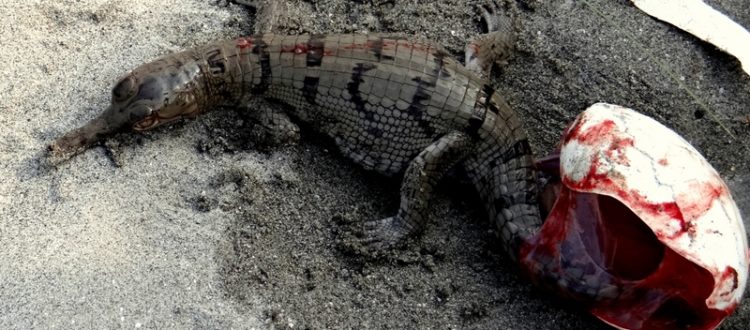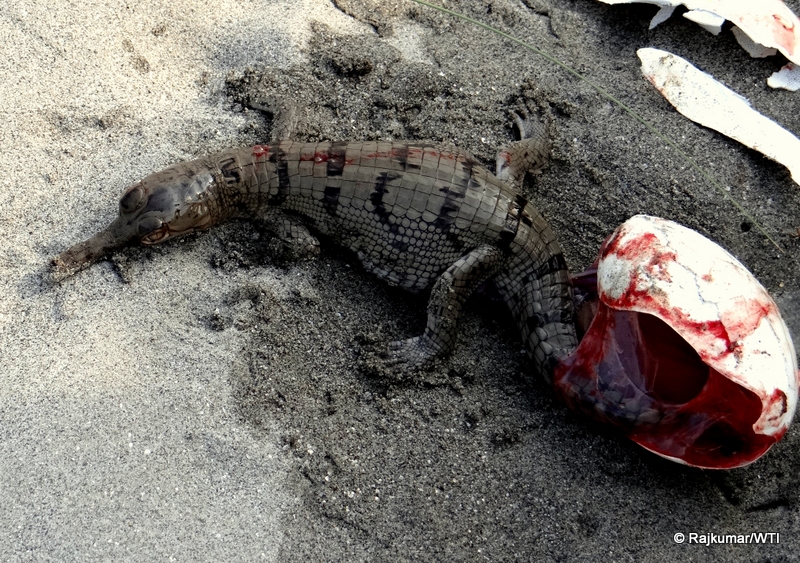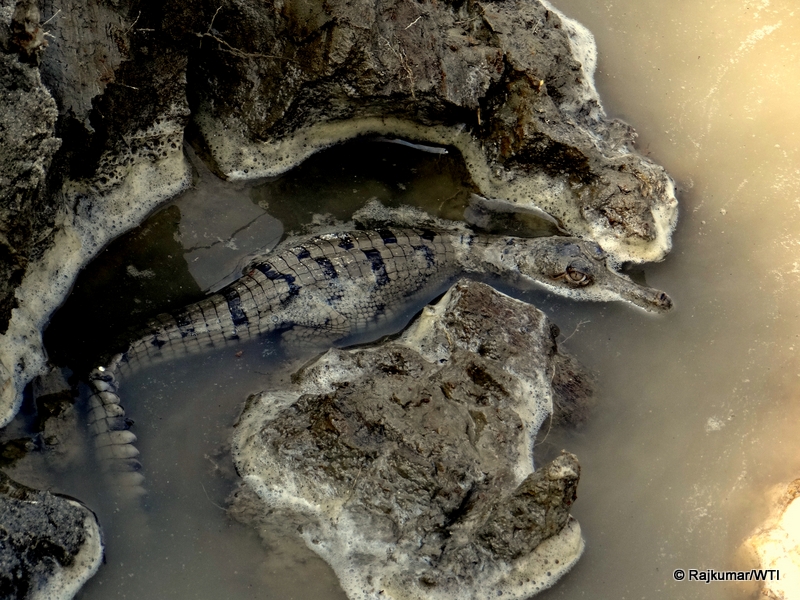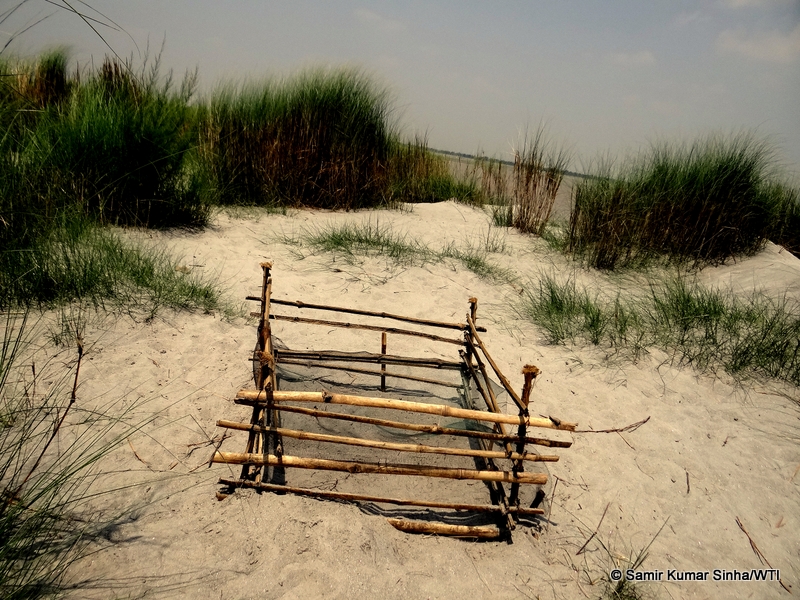WTI Discovers Third-largest Breeding Population of the Critically Endangered Gharial in India
“We waited 59 days to see the hatchlings emerge from their nests, which we had located in the first week of April”, said Samir Kumar Sinha, who heads the Gharial Conservation Project run by Wildlife Trust of India (WTI) on the Gandak River. There has been no record of the Gandak being a breeding ground for the critically endangered crocodilian over the last three to four decades, but having seen signs of a breeding population, the WTI project team rigorously monitored possible nesting sites along a 150km stretch of the river. The team located six nests, which were protected through the incubation period with the active support of local farmers.
Gharials were once common in the Indus, Ganga and Mahanadi river systems but their range has shrunk significantly. The Gandak was never regarded as a gharial stronghold; a 2010 study had recorded 15 gharials, but a comprehensive river survey conducted by WTI in 2015 found a minimum of 54 gharials, of which 26 were adults. “Discovering a breeding population in the Gandak River, the third-largest among the four breeding populations in India, is great news for the future of gharial conservation in the country”, said BC Choudhury, renowned crocodilian expert and Senior Advisor, WTI.
“The state government is committed to conserving gharials in the Gandak River, and with the discovery of a breeding population and nesting sites we are encouraged to strengthen our commitment further”, said US Jha, Chief Wildlife Warden of Bihar. The Bihar Forest Department and WTI have already chalked out a year-long plan for gharial conservation, he added.
WTI and the Bihar Forest Department have also jointly implemented a Gharial Restocking Project on the Gandak since February 2014. Thirty sub-adult gharials born in the Sanjay Gandhi Biological Park, Patna, were released into the river in 2014-15.












